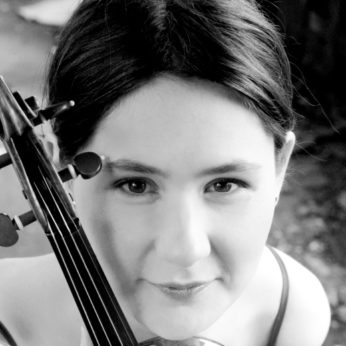Eugène Ysaÿe, frequently praised as a herald of modern violin technique, wrote his Six Sonatas for Solo Violin in the dusk of his life after consistent bad health had undermined his career as a concert violinist and conductor. They are finely crafted musical portraits of violinists, whom he held in high esteem, and are replete with references to their musical tastes and idiosyncrasies. The Sonatas stand as monuments of the violin repertoire, condensing Ysaÿe’s prodigious knowledge of the instrument into a compositional vehicle available for future generations. The second sonata pays homage to Jacques Thibaud, the legendary virtuoso and sensitive chamber music companion of Pablo Casals and Alfred Cortot.
Obsession opens with a direct quote from Bach’s third violin Partita. Our surprise at its appearance is short lived as the phrase is answered with one of Ysaÿe’s own, tearing apart the fragile optimism of the opening bars in frustration. References to the Partita return as shadows, populating the movement as homage to Thibaud’s obsession with Bach, an aspect of his character revealed in his habit of playing the third Partita at the start of every practice session. The sense of strain that saturates this movement is perhaps a reference to Thibaud’s long and fraught struggle to regain his instrumental technique after being wounded in the trenches of the First World War. Ysaÿe gives voice to the frustration of an injured master attempting to conquer the lofty edifice of Bach with limited technical means.
Malinconia draws heavily on the Dies Irae theme and weaves of it a profound polyphony that seems to transcend the violin’s modest stature. The introspected and humble nature of the melody is compounded by the plaintive tone of the muted violin. A brooding stillness offers hope of a transcendental tranquillity, but its implicit ephemeral tone reflects a persistent fear of judgement expressed in the text of the Dies Irae: What shall I, a frail man plead?
Which Patron for me will intercede,
When even the Just need mercy?
Dance des Ombres opens with a gentle plucked Sarabande, but the lullaby effect is gradually subsumed to the Dance of the Shades. We feel as if a menacing force pursues the violinist through the theme and variations, from the momentary peace of the opening bars through increasingly dense cascades of notes, until the falteringly heroic theme of the closing bars.
Les Furies: Allegro furioso. In this last movement, replete with ferocious attacks and schizophrenic changes of dynamic, the portrait of the haunted violinist is complete. After the respite of the second and third movements, the tempestuousness of the fourth seems all the more overpowering, it’s exploding virtuosity a sublime tribute to Thibaud’s life which was tragically ended in a plane crash over the French Alps in 1943. If the Sonata paints a portrait of a violinist consumed by turmoil, it simultaneously reminds us of a unique beauty that emerges when tribulations are redeemed through the majestic expression of an art.
A 1931 obituary to Ysaÿe in The Musical Times described his playing as having placed the principle of self-expression on a level with that of truth to the composer. It is perhaps this particular musical sensitivity that lent the Sonatas the unique dynamism that allows them to sound perennially contemporary, and still leaves them open to multifaceted interpretation.
